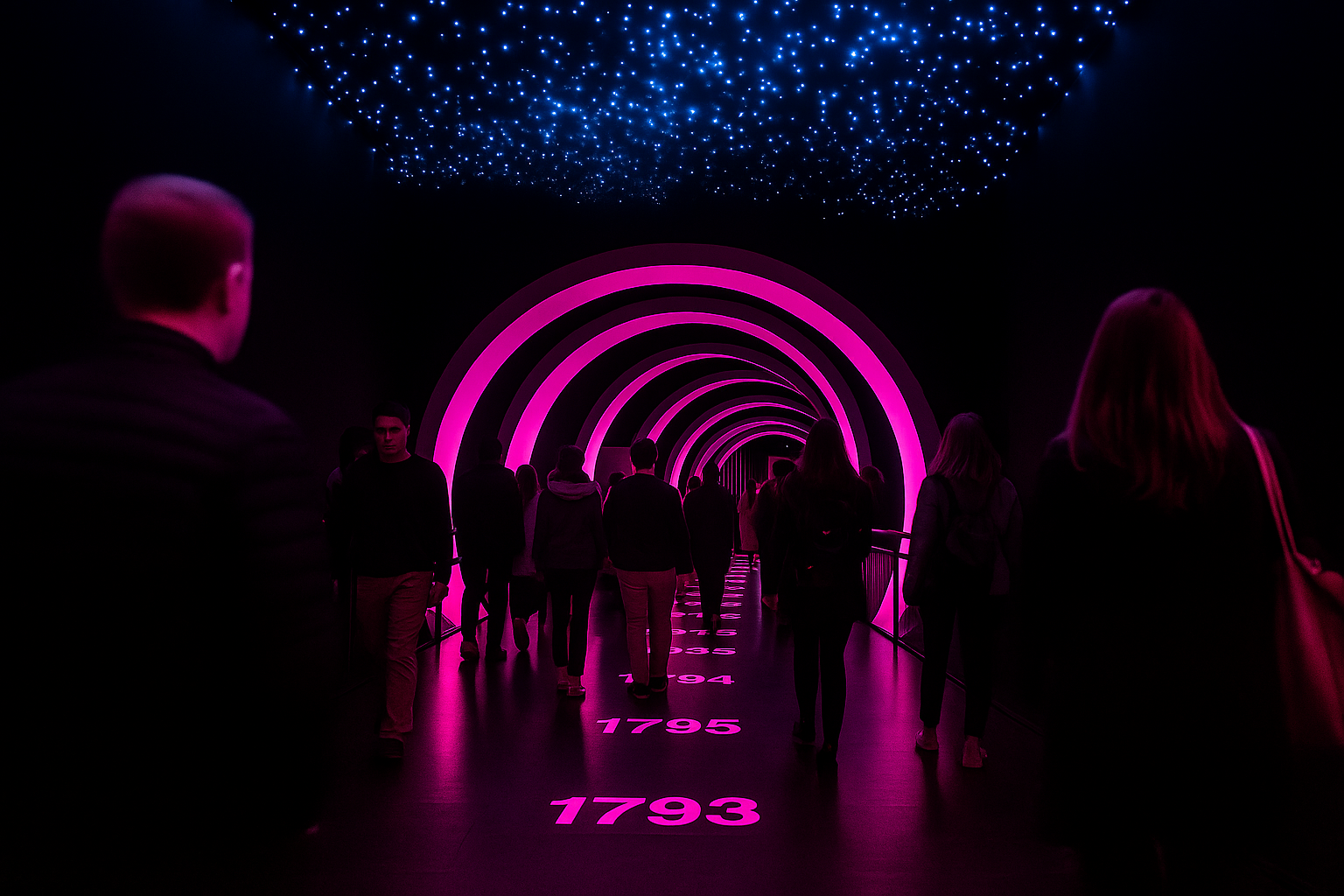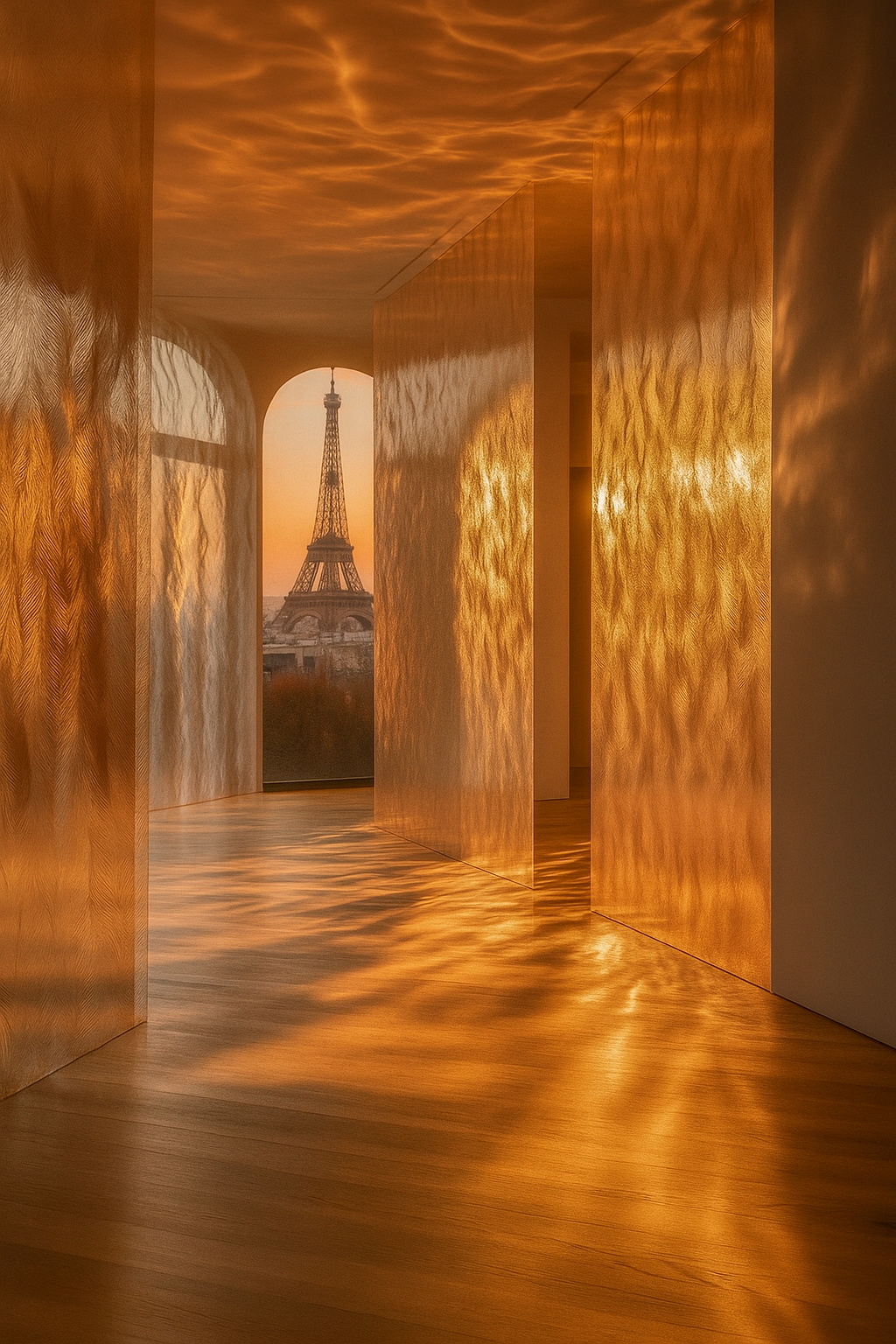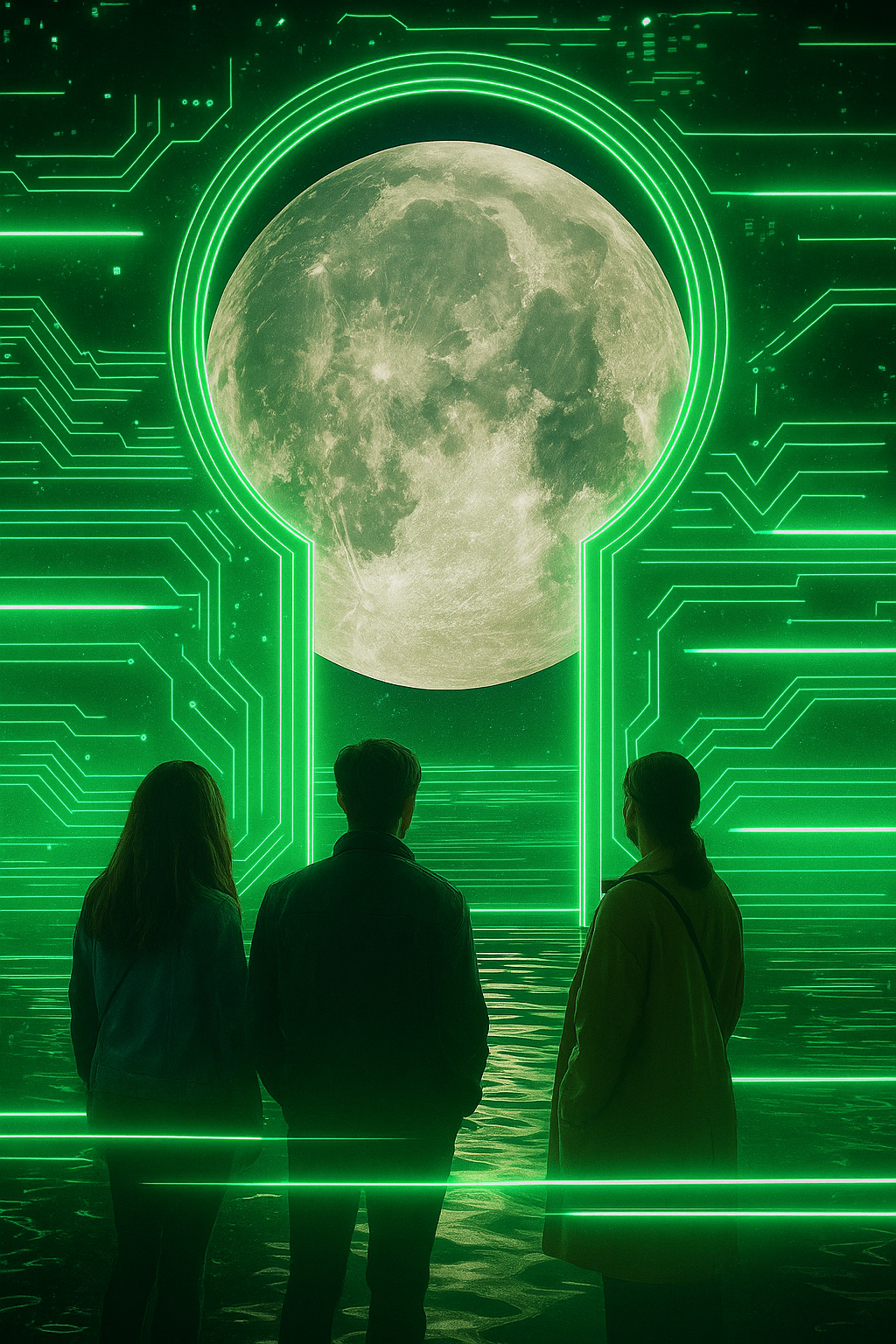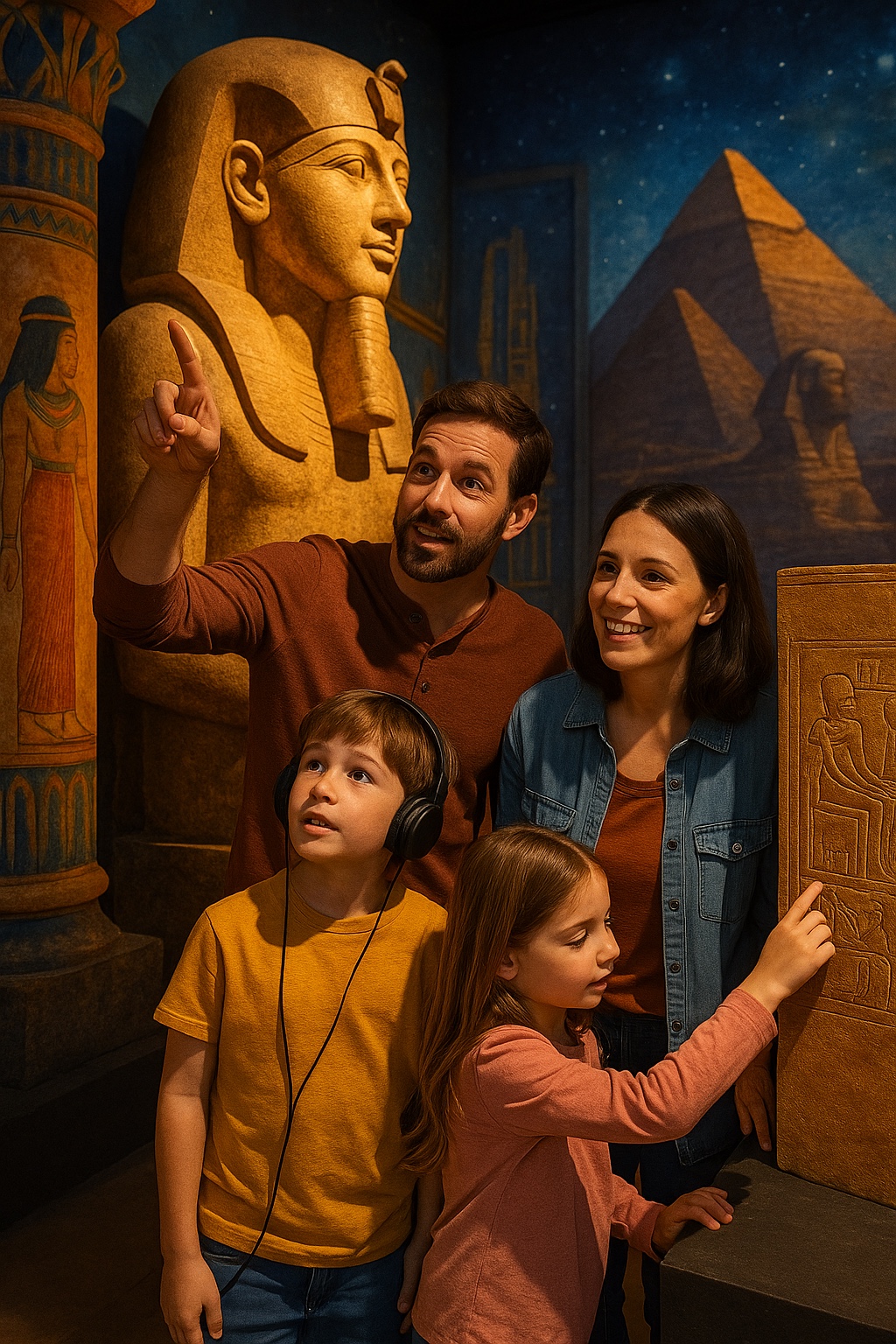Immersive exhibitions have the power to do just that, transporting us into history, fantasy, or memory without needing a passport. But what makes this transformation possible isn’t just good design or storytelling, it’s technology working behind the scenes to stimulate our senses and engage our imagination.
In this article, we explore five technologies that have been reshaping the way cultural experiences are created. You don’t need to be a tech expert to understand them, we’ll break down how each one works, and why it matters for you as a visitor. From projection mapping to scent diffusion, these innovations make it possible for exhibitions to speak not just to your eyes and ears, but to your entire body and mind.
Whether you’re an art lover, a history buff, or simply curious, you’ll discover how the future of culture is being built, one sense at a time.
1. Projection Mapping: Painting with Light
Imagine walking into a dark room and watching the walls come alive, shifting from stone castles to starry skies in seconds. That’s not a special effect from a movie; it’s projection mapping.
What is it?
Projection mapping is a technology that turns any surface, a wall, a statue, even a floor, into a dynamic canvas. Instead of projecting an image onto a simple screen like in a cinema, it adapts to the shape and texture of real-world objects. Think of it as digital paint, carefully designed to fit every curve, edge, and detail.
Why does it matter?
This technique allows immersive experiences to transform physical space into storytelling environments. A blank museum room can become a stormy battlefield, a candlelit palace, or an underwater cave, all without building a single physical set. By syncing motion, light, and sound, projection mapping draws people into the story, making them feel like they’re inside the narrative.
How it feels for visitors
You’re not just looking at history, you’re standing inside it. When projection mapping is done well, the boundaries between real and virtual blur. Visitors don’t just observe a scene; they feel surrounded by it. That emotional response deepens memory, heightens engagement, and sparks curiosity, all essential goals for immersive cultural storytelling.
2. Spatial Audio & Haptic Feedback: When Sound and Touch Tell the Story
Ever closed your eyes and felt like someone was whispering right next to you? Or sat in a chair that rumbled beneath you during a film? That’s the power of spatial audio and haptic feedback, technologies that make you feel the story, not just see it.
What is spatial audio?
Spatial audio is a 3D sound system. Instead of sound coming from a single direction (like traditional speakers), it’s designed to move around you, above, behind, or even beside your ear, mimicking how we hear in real life. So, if a horse gallops from left to right, you hear its hooves crossing the room. It’s like surround sound with a sixth sense.
And what’s haptic feedback?
Haptic feedback is a fancy term for touch technology. Special seats or floors can gently vibrate, shake, or pulse in sync with what’s happening in the story. Picture thunder rolling through your seat during a storm scene or feeling a distant cannon blast in your chest. It’s subtle, but your body remembers.
Why does it matter in immersive exhibitions?
Together, spatial audio and haptic feedback make cultural storytelling more visceral. Sound becomes a guide, not just a background. Touch becomes part of the narrative. This combination lets visitors live the emotion, fear, wonder, joy, through their whole body. Whether it’s the breath of a hidden character behind you or the distant echo of history, these sensations create deeper memory and presence.
How it feels for visitors
You don’t just learn about history, you feel it in your bones. You hear Caesar’s footsteps approaching, not just narrated. You sense the tension of battle before you see it. It’s storytelling that touches every sense, making the experience unforgettable.
3. Interactive Sensory Environments: Walking Through a Living Story
Imagine walking into a room where the walls shift as you move, the sounds respond to your steps, and the lighting changes based on where you look. That’s not science fiction, it’s the reality of today’s interactive sensory environments.
What does that mean exactly?
These are spaces where your presence shapes the story. Instead of passively looking at an exhibition, you become a participant. As you walk through the space, your body movement can trigger visuals, sounds, scents, or even tactile changes. Everything is designed to respond to you, creating a fluid, living experience.
What kind of senses are involved?
- Visuals: Moving images or light projections that react to your position or gestures
- Soundscapes: Layers of music, voices, or ambient sounds that shift as you move
- Physical interaction: Touch-sensitive walls, pressure-sensitive floors, or even objects you can manipulate
For example, walking into a recreated battlefield might start with silence. But step closer to a certain spot, and you might hear voices preparing for battle, or see flickers of past memories on the walls.
Why is this powerful?
This kind of sensory storytelling pulls you in. It doesn’t just tell a story, it lets you feel like you’re inside it. You don’t need to read a timeline; you sense time passing. You don’t just see history; you uncover it step by step. The environment becomes a character itself, shaped by your presence.
For visitors, what does this feel like?
It feels like walking through a dream that reacts to your curiosity. Whether you’re exploring a royal chamber, a war-torn street, or a writer’s imagination, you feel agency, like the story is unfolding with you at the center.
4. AI-Powered Content and Visuals: When the Story Adapts to You
What if the story changed depending on how you reacted? What if the visuals on the wall weren’t pre-recorded, but generated in real time just for you? That’s the magic of Artificial Intelligence (AI) in immersive exhibitions.
So what does AI actually do in an exhibition?
AI can analyze your behavior, such as where you look, how long you linger, or even what choices you make, and then adjust what you see or hear accordingly. That means every visitor could experience the same space in a slightly different way, tailored to their reactions or preferences.
Let’s break it down with examples:
- A visual timeline that expands when you show interest in a specific event
- A character on screen that responds to your choices, like a historical figure answering your question
- Background visuals that evolve based on how much time you spend in an area, from sunrise to storm, from war to peace
AI also fuels real-time creation. Using machine learning and image generation, exhibitions can feature AI-generated artworks, scenes, or animations that feel fresh and surprising every time. Think of it as the difference between watching a movie and entering a world that reshapes itself for you.
Why does this matter?
Because it creates a sense of connection and co-creation. You’re not just watching something unfold, you’re part of the unfolding. That emotional investment makes the experience more meaningful, memorable, and uniquely yours.
What does it feel like for the visitor?
It feels like the exhibition is “listening” to you. Like you’re not one person in a crowd, but a participant whose experience is being shaped in real time. That intimacy, between you and the story, is what turns good storytelling into transformative experience.
5. Ephemeral Technology Installations: Sensory Moments That Vanish
Imagine walking through a cloud of fog that slowly reveals a glowing silhouette. Or bubbles drifting past your face, catching the light like tiny prisms before vanishing. These moments don’t last, and that’s precisely the point.
Ephemeral technology refers to immersive elements that are temporary, fluid, and sensory by nature, things like mist, bubbles, wind, vapor, or even plasma light that flickers for just a moment. These materials aren’t meant to stay; they appear, move, and disappear, creating poetic, dreamlike moments that speak to our emotions and our sense of time.
Why use such fleeting effects?
Because they tap into something deeply human: our awareness of impermanence. In exhibitions, ephemeral tech helps craft experiences that feel intimate, emotional, and alive. A misty corridor might symbolize memory. Floating orbs might react to your movement. A flash of light could mark the climax of a story. You feel like something is happening just for you and then it’s gone.
What does this bring to the immersive journey?
It adds surprise, elegance, and depth. These temporary effects are often layered with light, sound, or motion to create multi-sensory landscapes that shift as you move through them. They don’t overwhelm, they enchant. They slow you down. Make you pay attention. And often leave behind a lingering emotion, like nostalgia, wonder, or awe.
In short, ephemeral technology reminds us that not everything needs to be permanent to be powerful. Sometimes the most moving stories are the ones that pass like fog, light, beautiful, and unforgettable.
From ephemeral fog to AI-driven visuals, today’s immersive exhibitions are more than just spectacles, they are carefully designed emotional journeys. These five technologies don’t just enhance storytelling; they reshape how we feel, remember, and engage with history, culture, and imagination. As innovation continues to evolve, so too will the ways we step into new worlds and live the story from the inside.
Curious about more groundbreaking immersive experiences?
Follow us and share your thoughts on the future of multisensory storytelling in the comments below!



